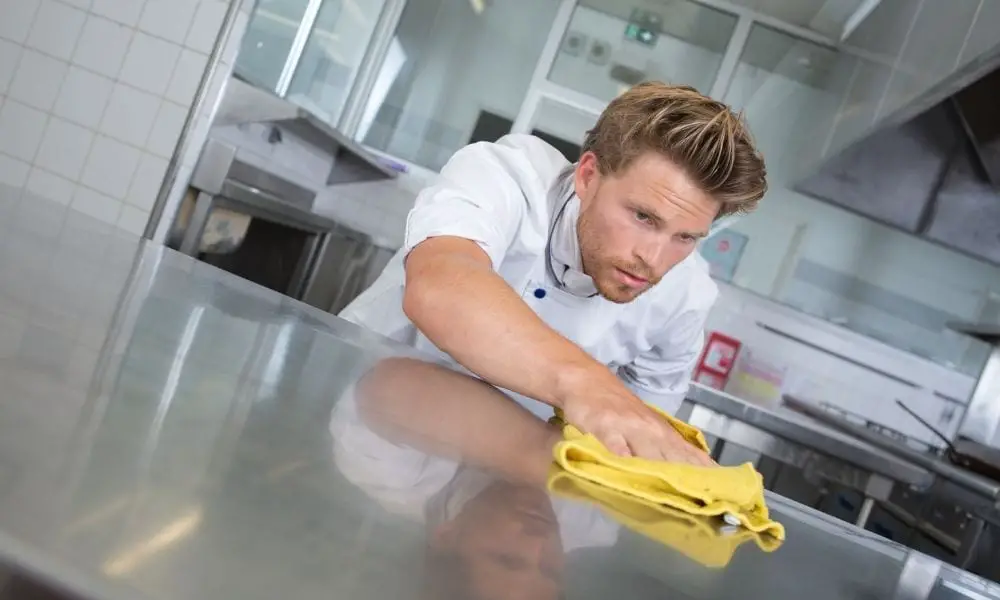

Stainless steel is all around us. It’s used in kitchen appliances, automobiles, industrial tanks and machinery, architecture, and more. The material is known for being both sturdy and low maintenance, but it does require some routine cleaning and upkeep. This guide on how to maintain stainless steel will teach you the basics of keeping your stainless steel in good condition.
As with any other material, you must clean stainless steel regularly. The method and materials you use to clean stainless steel will differ based on how dirty the surface is:
Always remember to clean in the direction of the stainless steel’s grain. Never use bleach on stainless steel, as it will damage the finish. Avoid the use of abrasives, but if the steel is dirty enough that you must use an abrasive to clean it, be sure to choose the gentlest one possible.
Polished stainless steel is smooth and shiny, and it makes for an attractive surface. If you have an appliance or piece of machinery made of polished stainless steel, you may need to repolish it at some point in its life. Depending on your desired finish, you can use one of several different types of polishing compounds to polish your stainless steel.
Passivation is a common process performed on stainless steel that keeps the metal from corroding. The process is particularly common on industrial stainless steel parts and on metal tanks and pressure vessels that hold potentially corrosive materials. To passivate stainless steel, the steel must first be cleaned. Then, a passivating solution is placed on the metal, removing iron particles from the surface of the steel and coating it to increase its resistance to corrosion. If the function of your stainless steel item makes it particularly susceptible to corrosion, passivating it is a good idea.
Hopefully this guide has taught you something you didn’t know about how to maintain stainless steel. Whether you work in an industry that uses stainless steel machines or you just want to polish your kitchen utensils, use this information to keep your stainless steel beautiful and functional.
Find out when to upgrade your industrial storage solutions to improve efficiency, boost safety, cut…
Disposable e-cigarettes are redefining how nicotine is consumed—and they're doing so with growing support from…
For smokers seeking a healthier way to enjoy nicotine, innovation has brought forward one of…
Discover the incredible teamwork of bees and how their collaboration sustains ecosystems. Learn how we…
A night out at a top-notch bar with an incredible view can be an unforgettable…
Learn the critical safety features every go-kart track needs. From barriers to emergency solutions, these…